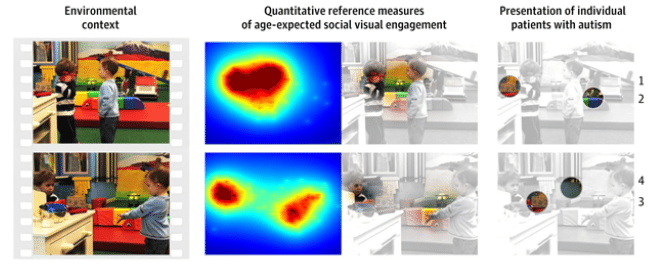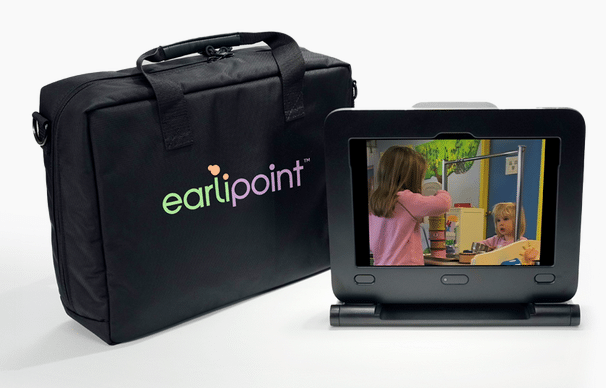EarliPoint Technology for Early Autism Diagnosis
EarliPoint Technology for Early Autism Diagnosis
Early diagnosis for autistic children is crucial to allow earlier intervention, which can truly make a lifelong difference. For example, with early diagnosis, children can begin therapies, be better understood by their caregivers and families, and develop communication and social skills to improve their overall success. When children are diagnosed earlier, they receive support sooner, leading to better outcomes later in life.
One way to improve diagnosis and early detection of conditions like autism is by using biomarkers.
What is a Biomarker?
A biomarker, or biological marker, is a term used to indicate a process of the body that can predict an outcome or disease. Biomarkers are objective and quantifiable characteristics. For example, blood sugar levels are a biomarker for diabetes and cholesterol levels are a biomarker that indicate a risk for heart disease. Biomarkers are helpful because they can help improve early detection and accurate diagnosis for patients.
Eye tracking as a Biomarker for Autism:
Difficulty with social interaction is a hallmark of autism. Autistic people can have trouble telling how other people are feeling and may not know what to do in social situations. As a biomarker for autism, when an autistic person interacts with another person, they may not spend much time looking at the other person’s eyes or face. They may also spend a lot of time looking background items rather than at the other person. Because this is a well studied phenomenon, using technology that tracks where an autistic person is looking while they watch video of people interacting can be used as a biomarker and tool for autism diagnosis.
The picture below shows where children with and without autism were looking while they were watching a video of two boys interacting. The column on the right shows what was happening in the video and the column in the middle shows where a child without autism was looking while they were watching the video. The middle column shows a “heat map” of where the child was looking, with darker red showing where the child spent the most time looking. There is also a shaded picture of video footage where the more colorful parts of the scene show what the child spent most of their time looking at. The child without autism spent most of their time looking at the faces of the children in the social scene and at hand gestures they made. The column on the right shows what a child with autism was looking at. The autistic child spent most of their time looking at toys and objects in the background of the scene.

Overall, when researchers added up all of the time that the child without autism and the child with autism spent looking at different things, they found that the child without autism spent most of their time looking at things that would give them information about what the two boys in the video were doing and feeling. The autistic child would spend most of their time looking at things in the background environment – things that did not have to do with the boys in the video.
Autism Diagnosis
Autism can be first diagnosed in children between the ages of 18-24 months. However, according to the CDC, early signs of autism can present even earlier. Behaviors that could indicate an autism diagnosis include lack of eye contact, which makes eye tracking a good way to detect autism early. That is important because recognizing autism early can help children get treatment sooner.
What is EarliPoint?
EarliPoint is a tool created by EarliTec Diagnostics Inc. It is designed to detect autism based on measuring “social-visual engagement” using eye-tracking. You can think of social-visual engagement as measuring how much time a child spends looking at social interactions in a video clip that they have been shown. EarliPoint works by having children watch videos of children playing together on a tablet device. The tablet has tiny cameras all around the screen that track the child’s eye movement. As the child watches more videos of other kids playing, EarliPoint is able to gather more data about what the child is paying attention to in those videos. At the end of the EarliPoint test, the device will send the data it collected off to EarliTec for analysis. Based on the results of the analysis, EarliTec will send a report that show the likelihood that the child has autism. Below is a picture of an EarliPoint device.

You can watch a short video to better understand EarliPoint here: https://youtu.be/zKEcAimzEN8
Fast Facts:
- EarliPoint correctly identifies 4 out of 5 children with autism.
- EarliPoint is an FDA Authorized* tool for ages 16-30 months. *FDA Authorized means that EarliPoint has been granted permission to help clinicians evaluate autism based on current evidence (meaning it can be used now based on promising results). However, it is not yet FDA approved, which requires further clinical data.
- EarliPoint can be performed in outpatient pediatric offices.
- EarliPoint’s accuracy is comparable to traditional testing like ADOS test.
- Georgia Medicaid will cover autism testing using EarliPoint.
Article by: Isabella Valentini and The Autism Toolkit
Sources:
https://jamanetwork.com/journals/jamanetworkopen/fullarticle/2808909
National Libraries of Medicine Sources:
https://pmc.ncbi.nlm.nih.gov/articles/PMC3078627/
https://pmc.ncbi.nlm.nih.gov/articles/PMC4035120/
https://pmc.ncbi.nlm.nih.gov/articles/PMC2758571/
https://pmc.ncbi.nlm.nih.gov/articles/PMC10491411/
Other resources you may be interested in
Please enjoy our articles and contact us if there’s a topic you would like more information about.
